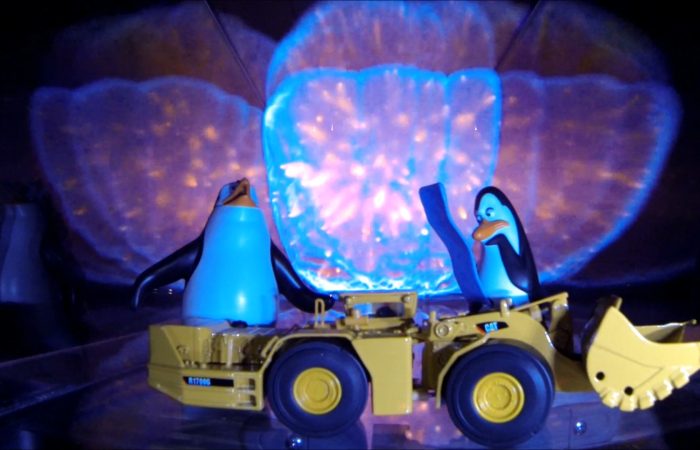
“Longwall 104 accumulated 14 methane exceedance HPIs. Those HPIs on longwall 104 were preceded by another 13 on longwall 103 between 2 July and 7 November 2019, and, further, those 13 HPIs on 103 were themselves preceded by multiple similar events on not only longwall 103 but also 102 and 101.” Grosvenor Inquiry Counsel Assisting Hunter
There is a noticeable lack of action both from Anglo Grosvenor and Inspectorate to get adequate methane pre-drainage of the Goonyella and surrounding seams over 2016 to 2020.
The need for effective pre-drainage was identified by both Grosvenor Management and the Inspectorate during during a Structured Inspection on Ventilation Standards in February 2016.
The Mine is relatively uncomplicated at present but it is anticipated that the future will present more challenging conditions especially in regard to working temperatures and effective pre-drainage of methane from Goonyella Middle seam and surrounding strata.
The lack of effective pre-drainage is the principal outright failure of both Anglo Management and the Inspectors to provide an acceptable level of risk to mine workers.
There cannot be a methane explosion unless there is too much methane for the ventilation system to adequately dilute below the lower explosive limit.
What if any actions can the Inspectorate show how they acted to ensure an acceptable level of risk from methane?
After all they are the ones that stated in May 2018
It was also acknowledged that continued HPl’s with Methane greater than 2.5% was not satisfactory and the mine must ensure that such HPl’s are minimised, and preferably eliminated going forward.
At the Grosvenor Inquiry, Counsel Assisting Hunter stated,
“Longwall 104 accumulated 14 methane exceedance HPIs. Those HPIs on longwall 104 were preceded by another 13 on longwall 103 between 2 July and 7 November 2019, and, further, those 13 HPIs on 103 were themselves preceded by multiple similar events on not only longwall 103 but also 102 and 101.”
Well all I can say is what did either the Anglo Grosvenor Management or the Inspectorate do to ensure the HPI;s are minimized and preferably eliminated?
SWEET F.A.
The Inspectors MRE talk about Grosvenor Mine Second Workings Plans for LW 103 starting in at least May 2018, Seven months before mining is planned to start in LW 103.
The major focus of the Inspectors seems to be using the bleeder shaft as an Intake not an exhausting shaft.
Reconsidering if the bleeder could be made a return.
Inspector Marlborough requested a copy of the Ventsim model which was the basis for the Mine decision to discount this option
During the discussions the Inspectors have raised several items for consideration;
Putting “bleeder road” onto return to create a negative pressure across the goaf to draw the gas fringe away from the TG end;
Applying suction to inertisation lines in goaf seals behind the LW after bleeder is put on return;
The bleeder shaft being intake and its effect on LW 104 goaf fringe received a lot of attention at the Grosvenor Inquiry.
The reason the bleeder shaft being on intake or return get more pertinent in LW 103 and LW 104 is that after a high number of methane HPI’s in LW 103, the Anglo Grosvenor Management at the urging of the Inspectorate change the bleeder shaft from intake to return.
Despite this Anglo revert to an intake bleeder shaft in LW 104 for the Grosvenor LW 104 Ventilation Arrangement (Little Britton LW Ventilation Arrangement)
The Second Workings Notices are given to Inspectors prior to Longwall Mining commencing in each panel.
The Notice was sent 3 days before LW 104 started on the 9th of March 2020.
LW 103 Notice was sent less than 4 days prior to the planned start of 15th December 2018.
The Second Workings Standard Operating procedure would have technical reports from the Ventilation Officer and consultants, and likely included Ventsim computer models
There would have been discussions with the DNRME in advance of submitting the Second Workings SOP,
If the Inspectors raised no concerns the Mine would have proceeded with the documented plan.
This would have been the third notice submitted following the ones for LW 101 and 102.
It is wide spread convention for the Mine Management to discuss Second Workings notices with the Inspector and the required documentation. The Inspectors would likely have been provide drafts documentation by Grosvenor Management well prior (often weeks to months) to the formal notice being sent.
There were at least 32 Methane HPI’s on LW 102 between January 1 and May 8th 2018.
MRE – Grosvenor Coal Mine – 9.5.2018 (Inspectors of Mines Les Marlborough and Richard Gouldstone Mine Record Entry of the 9th May 2018)
We explained that the mine had reported 32 HPIs since LW 102 had commenced production in January 2018.
This represented 60% of all HPIs in Queensland associated with Methane greater than 2.5% in the Longwall tailgate.
5. It was also acknowledged that continued HPl’s with Methane greater than 2.5% was not satisfactory and the mine must ensure that such HPl’s are minimised, and preferably eliminated going forward.
There are at least 29 Methane HPI’s on LW 103 during 2019.
There were at least 32 Methane HPI’s on LW 102 between January 1 and May 8th 2018
There are ongoing discussions and exchange of information about the Grosvenor Mines plans for LW103 between the Inspectorate noted in MRE’s dating back to May 2018, about 7 months prior to LW 103.
Inspector Gouldstone in his MRE for the 11th of December 2018 makes this comment. MRE – Grosvenor Coal Mine RG Floor blowers – 11.12.2018.pdf
A major vent change to establish 60 cubic metres/second on the longwall, maintain the bleeder as an intake to LW104 to return to LW103 and establish homotropal ventilation in the belt road.
Ventilating past previous longwall seals results in 0.3% methane reporting to the longwall maingate.
A vent shaft is planned for longwall 104 which will dispense with the need for the current bleeder
Cutting will commence on Saturday 15 December 2018 after the ventilation change.
Mr Niehaus undertook to give notice of second workings formally before the commencement of cutting operations and provide a copy of the latest ventilation survey results after the ventilation change.
Inspectors of Mines Les Marlborough and Richard Gouldstone Mine Record Entry of the 9th May 2018 contains the following comments about Methane and planning for LW 103. MRE – Grosvenor Coal Mine – 9.5.2018
We made the following points in conclusion;-
Intake pollution round the bleeder is a significant impact on the methane levels. This apparent with 0.4% showing on the MG methane monitor.
The Mine should consider options for reducing this including reversing air around the bleeder
We made the following points in conclusion;-
4. It was acknowledged that the Mine has conducted a significant amount of work to manage the gas in the LW TG and should be congratulated on the improvements in goaf drainage that have resulted from this.
The lessons learned from this work will be utilised in managing methane in LW103 which has significant challenges with its position under the Isaac River and the difficulty this imposes on goaf drainage hole positioning.
5. It was also acknowledged that continued HPl’s with Methane greater than 2.5% was not satisfactory and the mine must ensure that such HPl’s are minimised, and preferably eliminated going forward.
Inspector Gouldstone made this comment about MG MRE 6th August 2019 MRE – Grosvenor Coal Mine RG – 06.08.2018.pdf
3.2. Other Matters
Though not dealt with in detail in this instance there were other topics which were briefly referenced in discussions which were
- On going exchanges with methane exceedances
- Plans for risk assessment second workings LW 103 should be notified well before commencement, I requested a presentation of intentions based on LW 102 & 101 learnings
- Long term ventilation strategy and use of satellite shafts
LW103 Installation and Dust Mitigation Inspector Gouldstone 11th December 2018
The final 25 supports are to be installed with support commissioning in progress.
A major vent change to establish 60 cubic metres/second on the longwall, maintain the bleeder as an intake to LW104 to return to LW103 and establish homotropal ventilation in the belt road.
Ventilating past previous longwall seals results in 0.3% methane reporting to the longwall maingate.
A vent shaft is planned for longwall 104 which will dispense with the need for the current bleeder.
Cutting will commence on Saturday 15 December 2018 after the ventilation change.
Mr Niehaus undertook to give notice of second workings formally before the commencement of cutting operations and provide a copy of the latest ventilation survey results after the ventilation change.
The meeting was called at the request of Inspector Marlborough to discuss the recent 27 exceedances of 2 5% methane in the LWI 02 TG. Mr Marlborough had in the lead up to this meeting discussed with the Mine the following issues
Can the air around the “bleeder road” be reversed and this would allow suction to be applied to inertisation lines through the perimeter goaf seals on the TG side of the bleeder to draw the methane fringe away from the TG end of the face
Reconsidering if the bleeder could be made a return.
Inspector Marlborough requested a copy of the Ventsim model which was the basis for the Mine decision to discount this option
During the discussions the Inspectors have raised several items for consideration;
Putting “bleeder road” onto return to create a negative pressure across the goaf to draw the gas fringe away from the TG end;
Applying suction to inertisation lines in goaf seals behind the LW after bleeder is put on return;
MRE – Grosvenor Coal Mine – 18.01.2018
MG103 Development the emissions generated were due to floor coal being left capping the lower part of the seam below the Tonstein band which periodically ruptured.
The thicker the floor coal the more significant the emission with examination of minor peaks traced as being attributable to thinner floor coal.

